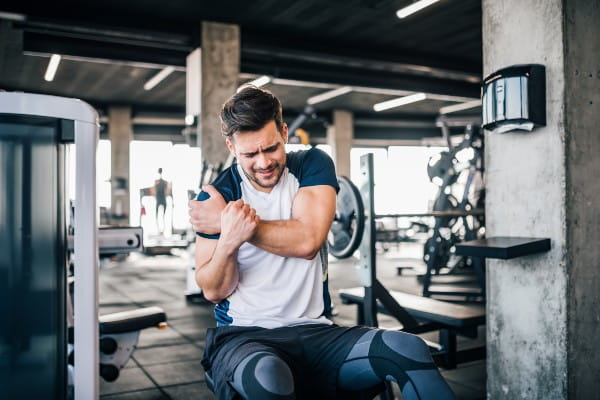We tend to assume that athletes are the most fit and strong individuals among us. However, that emphasis on extreme fitness can create a problem for women called “female athlete triad syndrome.”
“This syndrome can affect any highly active female, particularly young women, and it can have serious consequences,” says Stephanie A. Giammittorio, D.O, a sports medicine physician with Riverside Orthopedic Specialists Williamsburg, “It’s important to be able to recognize the traits of female athlete triad.”
This condition has three interrelated components:
- Low energy
- Menstrual dysfunction
- Low bone density
Low energy
Low energy availability in active females can occur from decreased caloric intake, excessive energy expenditure or both. Because athletes burn energy through activity, it’s critical that they receive enough nutrition to sustain the body. Unfortunately, disordered eating is not uncommon among athletes, with many dieting in order to lose weight before competition. While the type of eating behaviors that cause this lack of energy may not be severe enough to be classified as eating disorders like anorexia and bulimia, one Sports Health article revealed that between 16 and 47 percent of elite female athletes do have clinical eating disorders of some type. This is many times more than for nonathletes.
On the other hand, many athletes may not even realize they are not consuming the appropriate amount of calories. They may be excessively exercising, but have inadequate nutritional intake for the amount of energy they are expending. This deprives the body of needed nutrients, which can in turn cause low energy and fatigue.
Menstrual dysfunction
This relative caloric deficiency and low energy availability can lead to a decrease in certain reproductive hormones in order to divert energy to other important body systems. Menstrual dysfunction in the female athlete triad can range from irregular periods to amenorrhea—not having a menstrual period for three or more months.
Low bone density
Exercise is generally helpful in building bone mass in children and adolescents. However, exercising without taking in the necessary nutrition can have the opposite effect—bone loss. A combination of the low energy state, decreased reproductive hormones, and repetitive or excessive exercise can lead to a decrease in bone density. This can have serious consequences, including stress fractures that can sideline the athlete. Adolescent girls with menstrual dysfunction are as much as three times more likely to develop bone injuries according to an article in the journal, Pediatrics. This is a particular problem for young women who participate in endurance sports, like long-distance running. Longer term, if the body can’t make the bone material it needs during the formative years of adolescence and young adulthood, the athlete is more likely to develop osteoporosis in her later years.
Stay alert
Because all three conditions associated with female athlete triad syndrome are interrelated, it’s important to stay alert to each of them. For example, poor nutrition can cause bone weakness and interfere with the athlete’s normal hormonal cycle, which in turn can create additional bone issues. Disordered eating and the fatigue associated with it can also make the athlete feel depressed, anxious and have poor self-esteem, which can make the eating problem even worse.
“Remain aware. It’s important to remember that not every female athlete will display all three symptoms,” says Dr. Giammittorio. “In fact, it’s possible that just one of these conditions will be apparent in someone with the syndrome. Get help if you or your adolescent athlete exhibit any one of these problems.”
Don’t delay—contact Riverside Sports Medicine Specialists if you are concerned about female athlete triad syndrome. We’ll help you get back on track, doing what you love while remaining healthy and fit for the long game.



